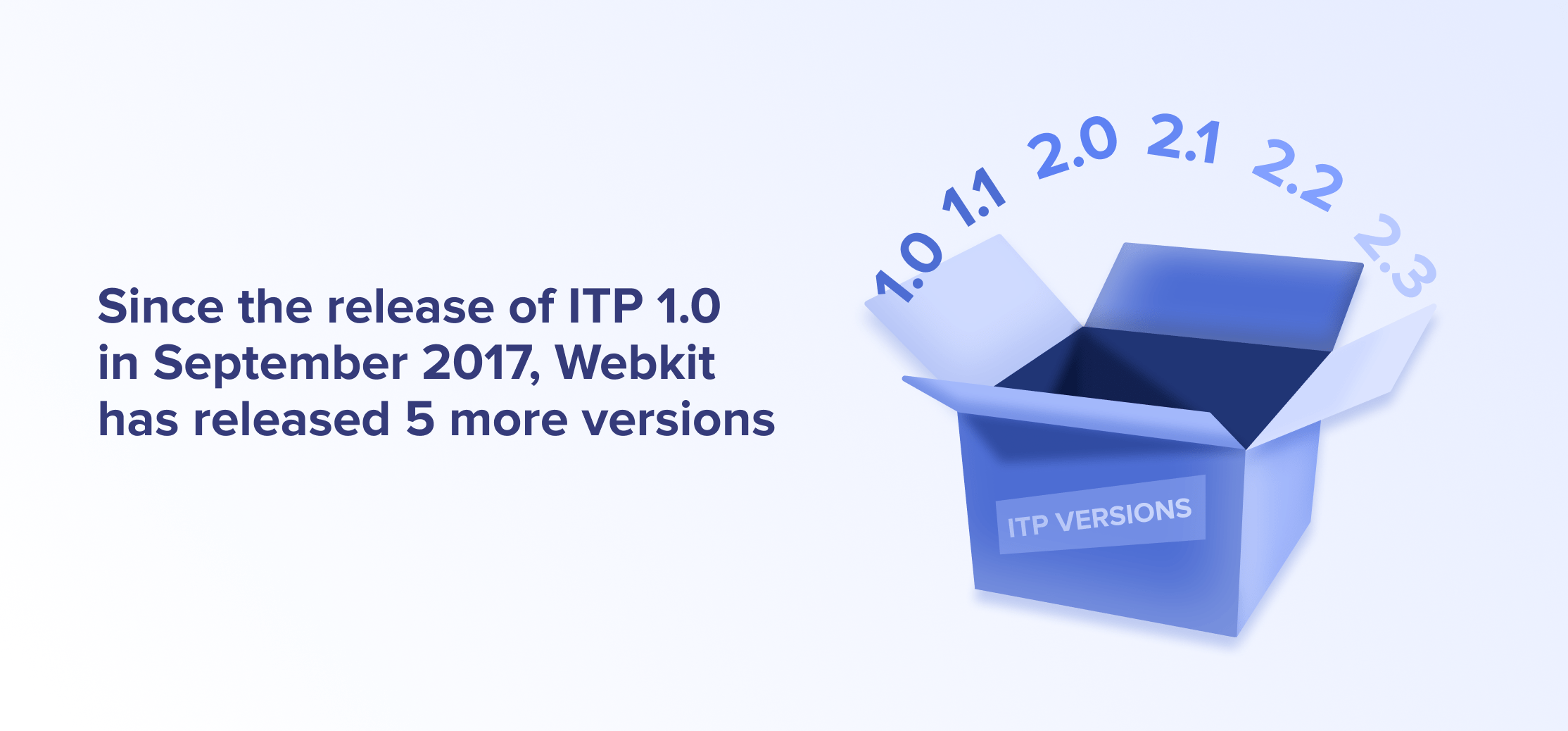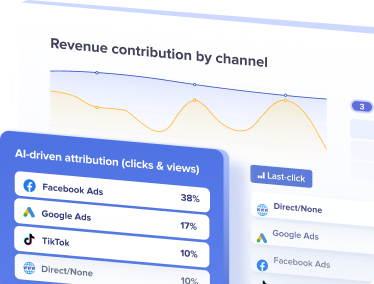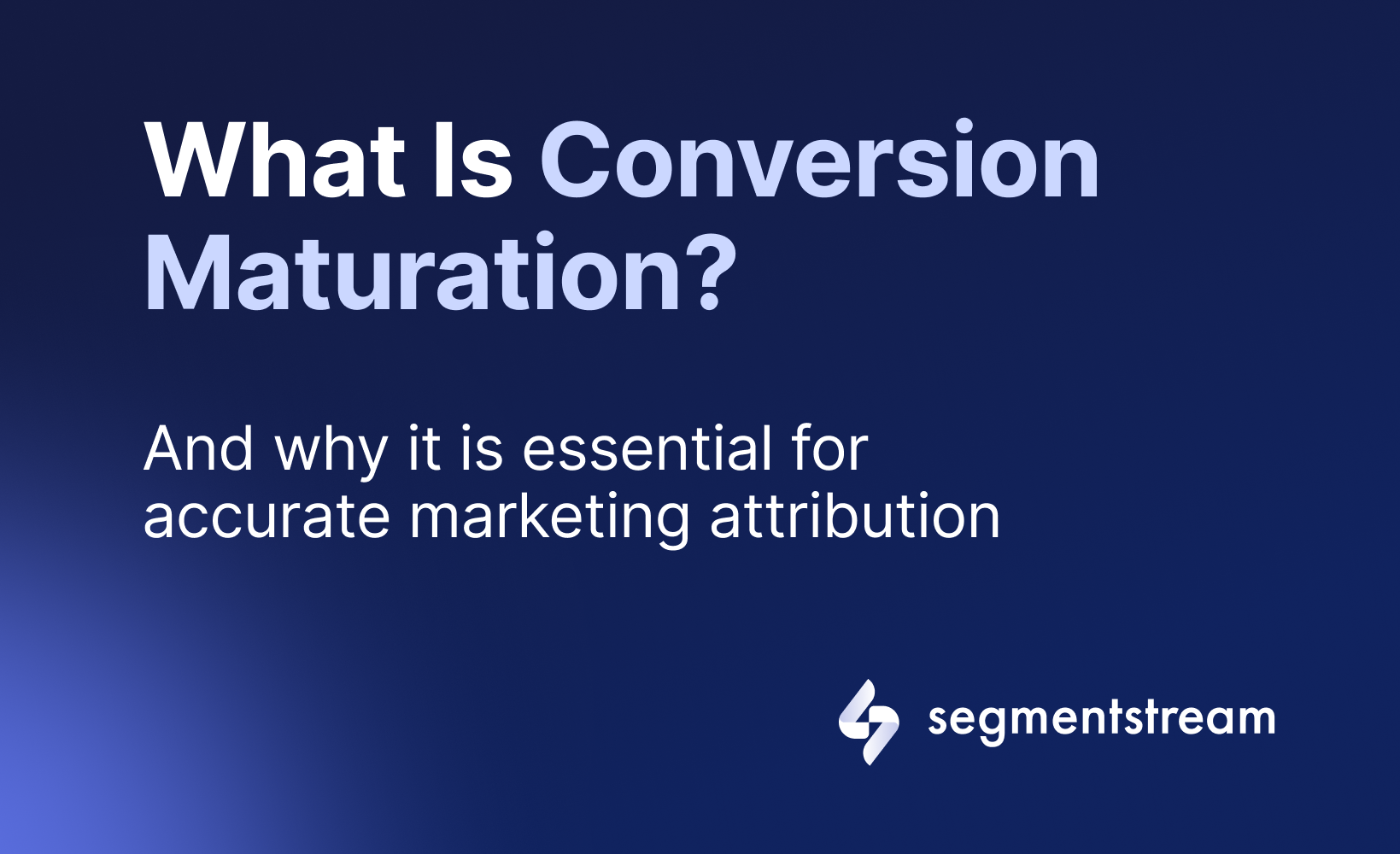How does ITP in Safari affect performance marketing and what can we do about it?
Table of contents:
- What is Intelligent Tracking Prevention in Safari
- Why do we need ITP?
- How ITP works
- Apple ITP’s effect on performance marketing
- What can marketers do about ITP?
It all started in 2017…
Apple caused disruption in the AdTech world, pioneering privacy features in browsers by introducing ITP (Intelligent Tracking Prevention) in September 2017.
It not only made Safari the most restrictive browser in terms of tracking but paved the way for others like Google and Mozilla.
Five years and five releases later, the dust has settled, but the challenges remain.
In this article, we explore what ITP is, how it alters marketing measurement and influence ad optimisation, and more importantly – what we can do about it.
Apple breaks cross-site tracking not to break users’ trust
Intelligent Tracking Prevention (ITP) is a feature in Safari that prevents cross-site tracking in order to deliver a more privacy-focused experience for its users by automatically blocking third-party cookies.
Safari is the first popular browser to entirely block third-party cookies by default. There are also Tor Browser and Brave that have been blocking third-party cookies for years, but they are way less mainstream, so the impact just cannot be compared.
ITP limits the lifespan of first-party cookies (expire after 1 or 7 days in some cases) and sets a 7-day limit on all non-cookie storage data, which includes Local Storage. It’s a web storage method that allows sites to store data directly in the browser, usually with no expiration date.
Before jumping straight to ITP, let’s do a quick recap on what we know about cookies.
A web cookie is a small file, stored in your device’s hard drive or a mobile browser. It basically represents our online footprint, as it stores the visitor’s data on preferred language or location and remembers pages you’ve visited.
We can divide cookies into first- and third-party, based on the context they’re used.
Let’s take a closer look at both.
Third-party cookies
This type of cookie is set when you’re on a site with an embedded ad block, a chat, or an image that is pulled from another domain. You’ve probably seen Facebook’s share button down many articles – this is it.
Third-party cookies allow collecting data about users’ interests and behaviour on external websites. Then publishers use this information to run more relevant advertising and retarget users.
They’re also used for tracking view-through conversions – when a user sees an ad, doesn’t click on it, but converts on the advertiser’s website. Using 3rd-party cookies, marketers can confirm that the conversion took place.
First-party cookies
First-party cookies are responsible for recognising you as a returning visitor and remembering data you shared with that website, e.g.: location, language preferences, logins and passwords.
If you return to a website that you buy plane tickets on and wonder how it knows your language or guesses the city you’re flying from – these are first-party cookies at work.
They also are a great help to web analytics, as they allow website owners to analyse site traffic using external vendors such as Google Analytics.
If you would like to learn more about cookies, read my latest article on cookies, online tracking & privacy.
How does ITP work?
According to WebKit, at the core of ITP lies a Machine Learning Classifier. The goal of this Classifier is in assessing domains that can be used to perform cross-site tracking. It concerns all major AdTech players such as Facebook and Google.
When the algorithm finds a domain that “has cross-site tracking capabilities”, the limitations described below are placed:
- The lifespan of first-party cookies is capped to 7 days. Example: cookies set by analytics tools like Google Analytics or Adobe.
- In cases when the link decoration is used, first-party cookies expire in 24 hours when the link that led users to your website contains decorations. Link decoration is a method of passing information from one site to another by adding a query string or fragment ID to the URL.
- All non-cookie storage data, including LocalStorage, is also capped to a 7-day limit. LocalStorage is a method that allows storing data directly in the browser with no expiration date.
As for third-party cookies, Safari blocks them by default.
ITP was developed by WebKit – an open-source browser engine behind Safari. So if you want to find answers to some technical questions, WebKit’s blog is the right source to dig in.
How Apple’s ITP affects performance marketing
While early versions of ITP (1.0–2.0) were focused on limiting the tracking capabilities of AdTech companies, releases after ITP 2.1 caused a massive disruption in web analytics, marketing attribution and ad optimisation.

1. How ITP affects web analytics
Analytical tools such as Google Analytics or Adobe heavily rely on first-party cookies to identify returning users. With first-party cookies lasting only for 7 days, those Safari users who return to a site a week after, will be recognised as new visitors.
Only in case, Safari users revisit your site before the seven-day limit, their cookie will be updated with a new 7-day lifespan.
All of this leads to incorrect marketing attribution.
Imagine a user lands on your website from a Facebook campaign on Day 1, chooses an item, wants to buy, but just needs to sleep on it. A week later, this user returns to a website directly and buys.
Due to ITP 2.1+, a cookie set by your tracking tool will be capped to a 7-day lifespan. As a result, it will not be able to attribute this Purchase to the initial source (Facebook Ads).
Meanwhile, for businesses with a short sales cycle, this could be not as much of an issue. However, if your users’ consideration period is longer than 7 days, it’s highly likely that your attribution will be affected.
What exactly does it mean for your performance marketing analytics? It means that in your reports you will not see a clear picture of the true value of your traffic sources. Thus hindering your ability to make efficient budget allocation decisions.
2. Performance marketing optimisation
Ad platforms’ algorithms learn and communicate by the means of Conversions. When you want more sales, you choose to optimise towards a particular Conversion – i.e. Purchase. The ad platform shows your ad to many groups of people and based on whether their interaction with your ad result in a Conversion (Purchase), it learns to select the right ad for the right audience.
Meaning that conversions play a role of feedback signals for the ad platforms’ algorithms.
As a result of ITP, if a user lands on your website from a Facebook ad, for example, and converts after 7 days, Facebook will not see this conversion.
Hence, the publishers often don’t receive enough of those signals (conversions) for accurate learning and optimisation. Which results in slowed algorithms’ training, lower performance and sometimes “limited learning” status.
What’s the solution to ITP limitations?
SegmentStream has developed a solution that goes beyond the limitations of ITP and similar restrictions.
Unlike traditional multi-touch models reliant on cookies and complete customer journey stitching, SegmentStream utilizes a wide range of data, including clicks, impressions, and user behaviour. This comprehensive approach provides deeper insights into the impact of various marketing channels and campaigns on sales.
SegmentStream includes view-through attribution, essential for assessing conversions from top-of-funnel sources like video and social media. In scenarios where users see ads but don’t click immediately, this feature offers a more detailed understanding of how these channels drive sales.
Consider a user who visits your site from a Facebook ad but doesn’t convert immediately, only to return and make a purchase the next day. Traditional tools would credit the last touch, often missing the actual contribution of the initial Facebook click.
SegmentStream’s approach recognizes the value of each touchpoint, providing a more accurate attribution even when cookies are wiped or expired.
Key takeaways:
- ITP is a privacy feature, launched in the Safari browser in 2017. It blocks third-party cookies by default and limits the lifespan of first-party cookies to 7 days. (In case when the link decoration is used, first-party cookies are wiped out in 24 hours).
- For example, first-party cookies set by analytical platforms like Google Analytics expire in 7 days. Meaning, that tools like Google Analytics are going to have a much harder time dividing new users from returning ones.
- First-party cookie limitations caused by ITP result in shorter conversion windows and a broken attribution, which impacts the effectiveness of your marketing channels.
-
SegmentStream’s Cookieless Attribution offers a comprehensive view of marketing impact, including view-through attribution, to counter these challenges effectively.
By adopting SegmentStream’s approach, marketers can gain accurate insights into their campaigns, ensuring better optimisation and smarter marketing decisions in a privacy-focused digital environment.
Optimal marketing
Achieve the most optimal marketing mix with SegmentStream
Talk to expert



